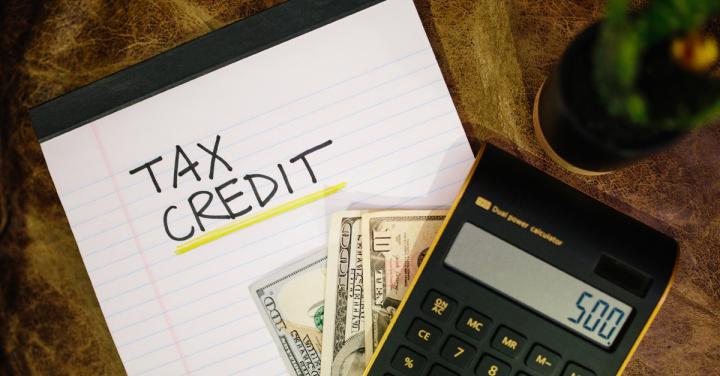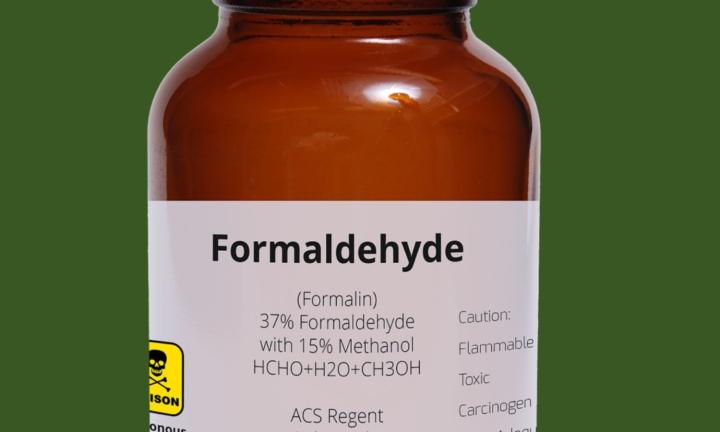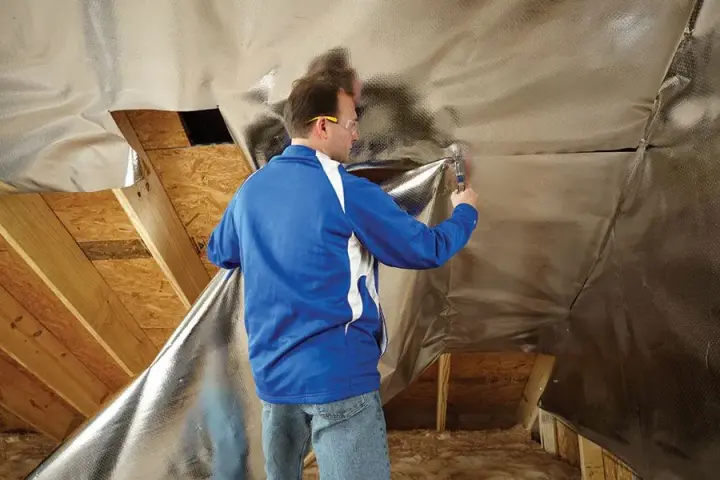Picture this: You just spent $2,500 upgrading your attic insulation. The work's done, your home is more comfortable, and your energy bills are already dropping. Then your neighbor mentions, "Oh, did you claim the federal tax credit for that?" You freeze. Tax credit? What tax credit?
Don't be that homeowner who leaves free money on the table. In 2025, multiple federal, state, and utility programs offer significant financial incentives for attic insulation upgrades—but many of them are ending soon or have strict eligibility requirements. Let's break down exactly what's available, how to qualify, and how to claim every dollar you're entitled to.
The Big News: Federal Tax Credit Ends December 31, 2025
Here's the most important thing you need to know: the federal Energy Efficient Home Improvement Credit, which covers insulation upgrades, is set to expire at the end of 2025. Originally slated to run through 2032, recent changes mean this is likely your last year to claim this credit.
Unless Congress extends the program (never guaranteed), any insulation installed after December 31, 2025, won't qualify. If you're considering an insulation upgrade, 2025 is the year to do it.
Federal Tax Credit: The Numbers You Need to Know
What You Can Get
The Energy Efficient Home Improvement Credit provides:
- 30% tax credit on qualifying energy efficiency improvements
- Up to $1,200 for home envelope improvements (insulation, doors, windows combined)
- Additional $2,000 for qualifying HVAC equipment
- Total maximum: $3,200 annually in tax credits
How It Works for Insulation
For attic insulation specifically:
- You can claim 30% of material costs (not labor)
- Maximum credit for insulation is $1,200 (shared with other envelope improvements)
- The credit is non-refundable (reduces your tax bill, but you won't get money back if it exceeds what you owe)
Example calculation:
- Total insulation upgrade cost: $2,500
- Materials cost: $1,200
- 30% tax credit: $360
- Your net cost after credit: $2,140
What Qualifies
Eligible insulation products include:
- Batts and rolls (fiberglass, mineral wool)
- Blown-in insulation (fiberglass, cellulose)
- Rigid board insulation
- Spray foam insulation
- Pour-in-place insulation
- Air sealing materials (when part of insulation project)
The product must meet ENERGY STAR requirements and come with a Manufacturer's Certification Statement.
How to Claim It
- Save all receipts and documentation
- Get Manufacturer's Certification Statement from your contractor or product packaging
- File IRS Form 5695 (Residential Energy Credits) with your tax return
- Claim the credit for the tax year when installation occurred (not when purchased)
Important: You must install qualifying products between January 1, 2023, and December 31, 2025, to be eligible.
Duke Energy Rebates: Up to $700 for NC Homeowners
If you're a Duke Energy customer in the Triad area, you have access to additional rebates that stack with federal tax credits:
Attic Insulation Rebate
Duke Energy offers two rebate tiers:
Tier 1: Upgrading from R-19 or less to R-38+
- $0.25 per square foot
- Maximum rebate: $600
Tier 2: Upgrading from R-12 or less to R-38+
- $0.27 per square foot
- Maximum rebate: $700
Example: Combining Federal and Utility Rebates
Let's see how these programs stack for a typical Triad-area home:
- Project cost: $2,500 (1,500 sq ft attic, R-15 to R-49)
- Material cost: $1,200
- Federal tax credit (30% of materials): -$360
- Duke Energy rebate ($0.25 x 1,500): -$375
- Net cost after incentives: $1,765
- Total savings from incentives: $735 (29% of project cost)
Now you're looking at a much faster payback period through energy savings!
Energy Saver North Carolina: Up to $16,000 Available
North Carolina launched Energy Saver NC in January 2025, funded by the federal Inflation Reduction Act. This program offers substantial rebates, though eligibility is income-based.
Two Programs Under Energy Saver NC
HOMES Program (Homeowners Managing Efficiency Savings):
- Up to $16,000 for whole-home efficiency improvements
- Covers insulation, air sealing, HVAC upgrades, ductwork
- Rebate amount based on projected energy savings
- Requires before-and-after energy modeling
HEAR Program (Home Electrification and Appliance Rebates):
- Up to $1,600 for insulation projects (income-dependent)
- Point-of-sale discounts (instant rebates)
- Up to $14,000 total for all improvements
- Covers heat pumps, water heaters, appliances, insulation
Income Eligibility
Both programs use household income as eligibility criteria:
- 80-150% of area median income: Partial rebates
- Below 80% of area median income: Maximum rebates
For the Triad area, many middle-income homeowners qualify for partial rebates. Check energysavernc.org or call 866-998-8555 to verify eligibility.
How to Apply
Applications accepted:
- Online at energysavernc.org
- By phone: 866-998-8555
- By email or mail
Note: Funding is limited and available on a first-come, first-served basis. Don't delay if you qualify.
Stacking Incentives: Maximize Your Savings
Here's the best part: you can combine multiple incentive programs for maximum savings. However, understand the rules:
What Stacks
- Federal tax credit + Duke Energy rebate = YES
- Federal tax credit + Energy Saver NC = Maybe (check program rules)
- Duke Energy rebate + Energy Saver NC = Check eligibility
Best-Case Scenario Example
Moderate-income homeowner in Winston-Salem:
- Project cost: $3,500 (larger attic, comprehensive upgrade)
- Material costs: $1,800
- Federal tax credit (30%): -$540
- Duke Energy rebate: -$600
- Energy Saver NC (HEAR): -$800 (income-dependent)
- Net cost: $1,560
- Total incentives: $1,940 (55% of project cost!)
The 2025 Deadline: Why Timing Matters
Several factors make 2025 a critical year for insulation upgrades:
Federal Tax Credit Expires
December 31, 2025, is the current expiration date. Unless Congress extends the program, this is your last opportunity to claim the 30% federal tax credit.
Energy Saver NC Funding Is Limited
While the program launched in 2025, it has finite funding. Once the money's allocated, new applications won't be accepted until additional funding (if any) becomes available.
Utility Rebates Can Change
Duke Energy reviews and adjusts rebate programs annually. While current programs are stable, there's no guarantee they'll continue indefinitely at current levels.
Smart Timing Strategies
To maximize your incentives:
Install Before December 31, 2025
The federal tax credit is claimed for the year of installation, not purchase. If you're planning an upgrade, complete it by year-end to claim on your 2025 return.
Apply for Energy Saver NC Early
First-come, first-served funding means early applicants have the best chance of receiving rebates. Don't wait until funds are depleted.
Check Duke Energy Deadlines
Utility rebates often have application deadlines. Complete work and submit applications within required timeframes (typically 90-180 days).
Combine Projects
If you're planning multiple efficiency upgrades (insulation + HVAC + windows), doing them together maximizes your $3,200 annual federal credit limit.
Common Mistakes to Avoid
Don't sabotage your rebates with these common errors:
Mistake #1: Throwing Away Documentation
Save everything: receipts, invoices, Manufacturer's Certification Statements, before/after photos, and energy audit reports. You'll need them for applications and potential IRS audits.
Mistake #2: Missing Application Deadlines
Many rebate programs require applications within specific timeframes after installation. Mark deadlines on your calendar and submit applications promptly.
Mistake #3: Using Non-Qualifying Products
Verify products are ENERGY STAR certified or meet program requirements BEFORE installation. Cheap, non-qualifying insulation won't earn rebates.
Mistake #4: DIY Without Proper Documentation
Some programs require professional installation or specific documentation. Understand requirements before deciding to DIY.
Mistake #5: Not Checking Income Eligibility
Many households assume they don't qualify for income-based programs without checking. You might be surprised—verify eligibility before dismissing these options.
Making the Most of 2025 Incentives
With the federal tax credit potentially ending, 2025 represents a unique opportunity for North Carolina homeowners. Here's your action plan:
Step 1: Assess Your Needs
Get a professional evaluation of your current insulation. Knowing your starting R-value and target R-value helps you understand which rebates you qualify for.
Step 2: Research All Programs
Check eligibility for:
- Federal tax credits (everyone)
- Duke Energy rebates (customers only)
- Energy Saver NC (income-based)
Step 3: Get Multiple Quotes
Compare costs from reputable contractors. Ensure they're familiar with rebate requirements and provide proper documentation.
Step 4: Complete Work in 2025
Don't delay—install insulation before December 31, 2025, to claim federal tax credits.
Step 5: File Applications Promptly
Submit all rebate applications within required timeframes. Don't lose thousands of dollars by missing deadlines.
Let Us Help You Navigate the Incentives
At 4 Seasons Insulation, we help homeowners throughout Greensboro, Winston-Salem, and High Point maximize available rebates and tax credits. We provide:
- Detailed documentation for all rebate applications
- Manufacturer's Certification Statements
- Energy audit reports when needed
- Guidance on which programs you qualify for
- Professional installation that meets all requirements
We've helped hundreds of homeowners claim thousands in rebates and credits. We know exactly what documentation is needed and how to ensure you get every dollar you're entitled to.
Ready to upgrade your insulation AND claim your incentives? Contact us for a free assessment and rebate eligibility consultation. We'll help you understand exactly what incentives you qualify for and ensure you don't leave money on the table.
Because 2025 might be your last chance to claim these valuable credits—don't miss out.




